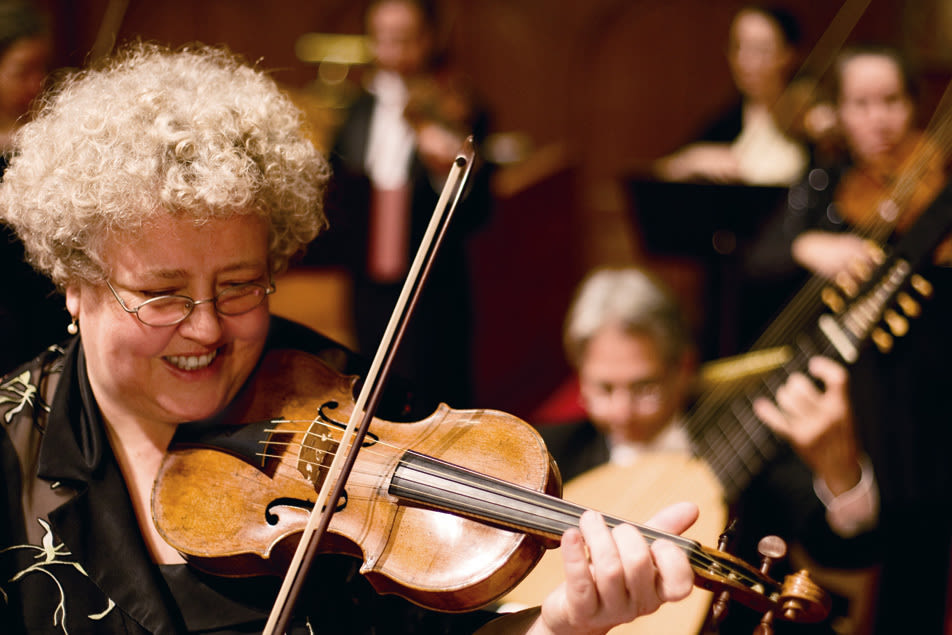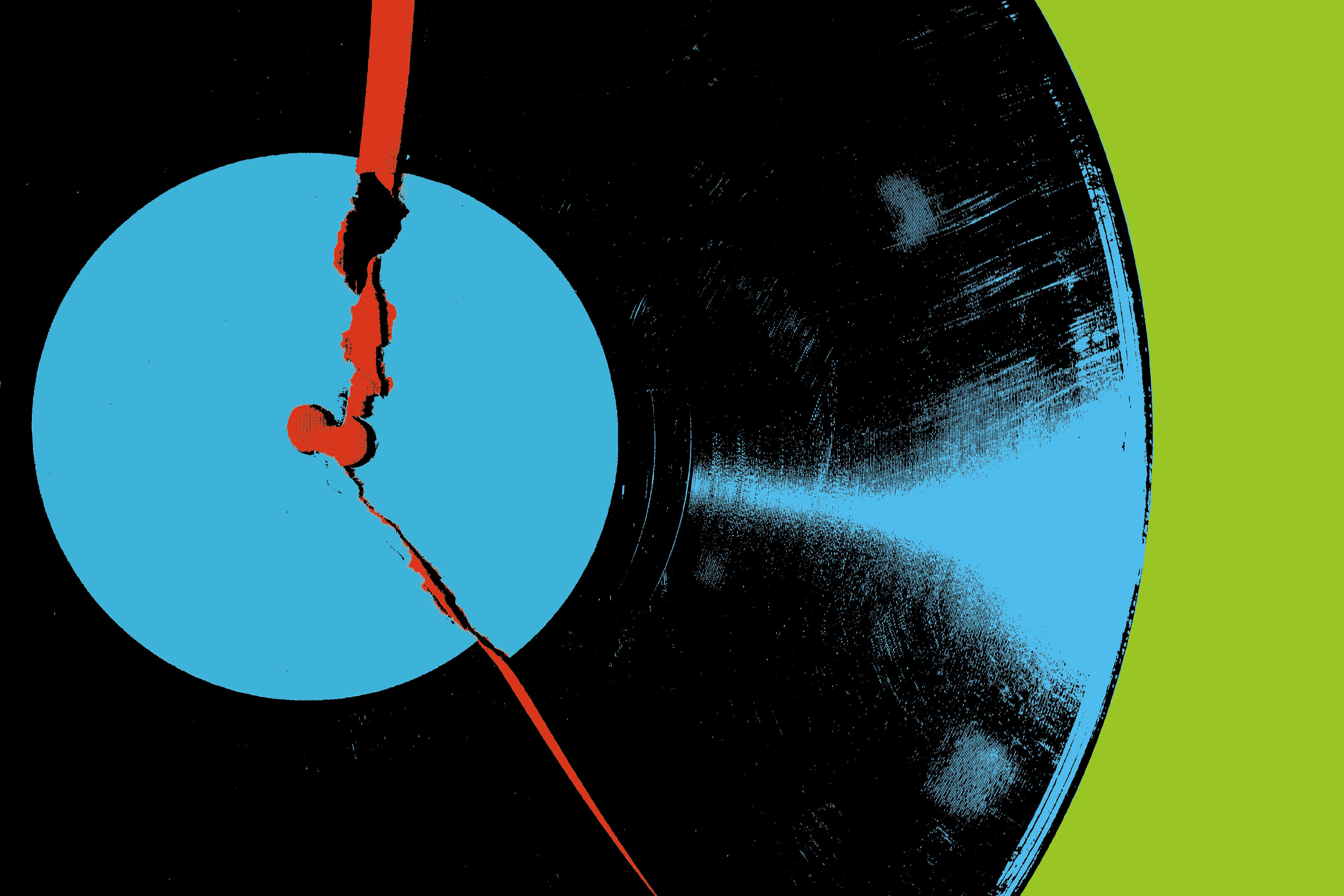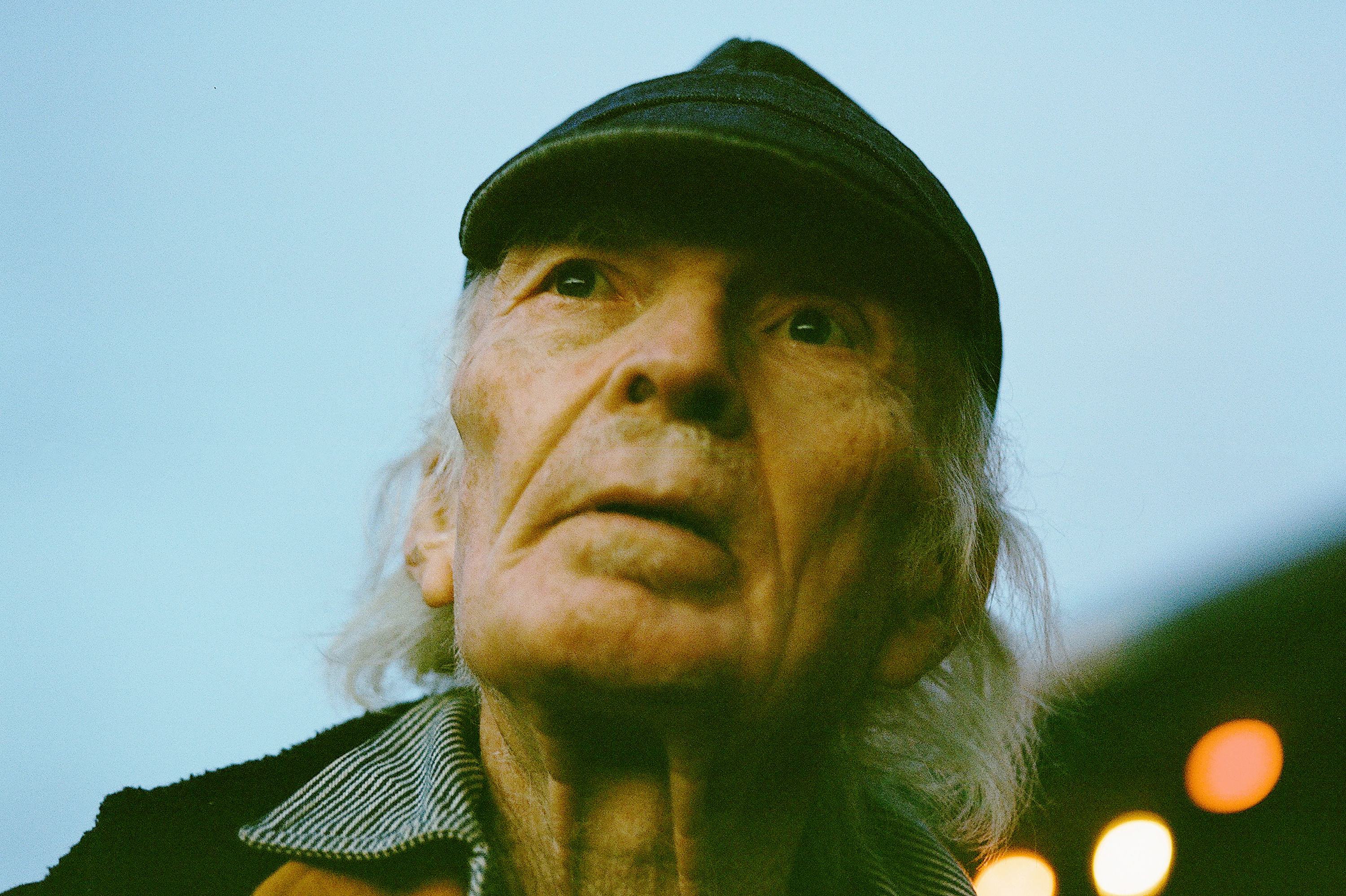Going for Baroque

APOLOGIES TO Colin Meloy, Stephen Malkmus, and other local indie-rock deities, but a century from now, history books may judge today’s most prominent Portland musician to be a ruddy-faced Baroque violinist named Monica Huggett. She certainly has more “hip” street cred—although “hip” in this case stands for “historically informed performance,” a style of musicianship that Huggett has advanced here and abroad with her virtuosic interpretions of 300-year-old Baroque ditties.
That style employs improvisatory gusto and period-authentic instruments—think violins strung with real sheep intestines—to make Baroque music sparkle as its composers intended. At a concert last fall in downtown’s First Baptist Church, Huggett, 54, demonstrated her robust technique by practically dancing a jig as she unleashed dazzling solos by Vivaldi on her 1707 Joseph Albani fiddle. And unlike classical ensembles that remain tenaciously glued to their chairs, her fellow players—gripping violins and violas, as well as archaic instruments such as the viola da gamba—stood and swayed in time like a jazz combo at Jimmy Mak’s.
Such performative exuberance would have been more or less unthinkable just two decades ago. But ever since Huggett took over as artistic director of the Portland Baroque Orchestra (PBO) in 1995, she and the ensemble, which celebrates its 25th anniversary next season, have earned a reputation for flouting expectations of old.
Compared to the more richly textured, symbolically layered music of the later Romantic period, Baroque music is lean and spry, known for its precise, contrapuntal rhythms; vivid emotions; and quicksilver ornamentation. It was written for ensembles much smaller than the contemporary symphony orchestra, and for instruments that were in some instances more delicate than those of today (e.g., the harpsichord, an ancestor of the piano, whose strings are softly plucked instead of hammered). Yet until the late 1970s, orchestras played this 17th- and 18th-century music in the Romantic style of a century later—with overpopulated ensembles, oversized concert halls, improper tunings, and other anachronisms that made the lithe music plod instead of gambol.
At a post-rehearsal dinner at Southpark restaurant, Huggett, a stout, genial, curly-haired London native, recalled the roots of her desire to unearth the true nature of a music she describes as “completely whimsical, almost stream of consciousness.” In the ’70s, when Huggett was a student at London’s stiffly conservative Royal Academy of Music (and an ardent Eric Clapton fan), she questioned why classical music couldn’t burn with the same fire as the blazing guitar riffs of her generation’s rock gods. But it wasn’t until the 1980s, when she co-founded the Amsterdam Baroque Orchestra and became its concertmaster, that she was encouraged to manifest her vision by the orchestra’s director, Ton Koopman.
“Something clicked,” Huggett recalls. “The epiphany for me was that if [Koopman] could get hold of the audience by the collar, the music could just jump off the platform. I realized: I’m an entertainer.”
In fact, for two decades now, Huggett has been one of classical music’s most important stylistic leaders, making hundreds of recordings and leading top European orchestras—and Portland’s resident ensemble—to new levels of artistry. At PBO rehearsals she uses dramatic gestures (waving hands, stomping feet, even pantomiming characters and events portrayed in the music) to inspire the players to take risks.
“Every single musician has to be a soloist,” Huggett explains. And the orchestra members respond in concert by heartily flinging themselves into the melodies. (Many of Bach’s works, after all, were stylized versions of country dances such as jigs and gavottes.) It’s a spectacle that audiences delight in, especially given the display of gorgeous period instruments—a harpsichord painted royal blue, a wooden flute, and what appears to be a guitar on steroids (actually a six-foot-tall theorbo, an Italian lute developed in the late 16th century).
The PBO concert this month offers an ideal introduction to Baroque music. Along with a suite by Georg Philipp Telemann, an incomparably prolific composer and the most famous of Bach’s contemporaries, PBO will perform three of Bach’s exemplary and wonderfully diverse “Brandenburg” concertos. The first concerto, which deploys a large ensemble including a pair of hunting horns and woodwinds, conveys “the grand, majestic side of Baroque music,” says Huggett. In the more intimate third concerto, which uses only string instruments, “you can watch the solo going ’round, being tossed from one instrument to the other,” she says, “a bit like Wimbledon.”
However the match plays out, audiences can look forward to a performance that’s anything but staid. And as long as Huggett is in charge, there’s no question that PBO will continue to explore Baroque’s sprightlier side—a long-overdue return to the music’s original spirit.




